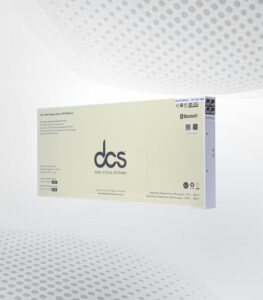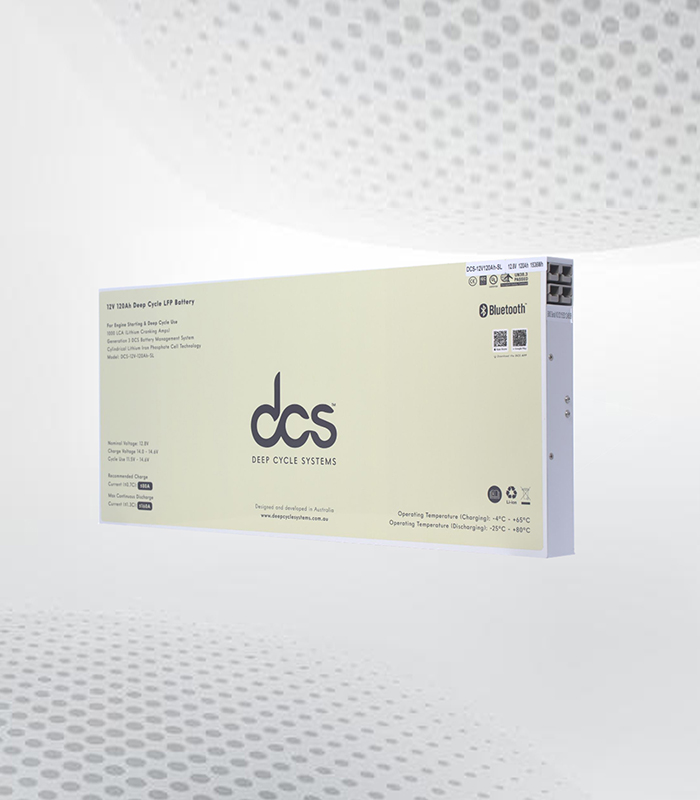The world is constantly evolving, and so are our technological needs. The Slim Lithium Battery is one such innovation that has revolutionised how we power our devices. These compact and lightweight batteries have changed the game regarding portability and efficiency. With the increasing demand for slimmer and more powerful batteries, the introduction of Slim batteries has been a game-changer in the tech industry. This blog post will dive deeper into the concept of Slim batteries, how they work, and the benefits they offer.
The Rise of Lithium Batteries in Modern Technology
Lithium batteries have established themselves as the power source of choice for various electronic devices, distinguished by their superior energy density and longevity. The evolution into Slim batteries represents a response to the growing need for power solutions that combine efficiency with minimalistic design, catering especially to portable electronics.
This shift towards slim battery technology is propelled by its unique advantages, including the capacity to power devices longer while occupying less space, a critical attribute in the development of mobile phones, laptops, and other compact electronics. The preference for lithium batteries in contemporary technology is not only attributed to their compact and lightweight attributes but also their ability to meet the increasing demands for energy by advanced devices.
The transition to slim versions has been further facilitated by advancements in material science and manufacturing techniques, enabling the production of batteries that are not only slim but also robust and capable of delivering sustained power output. As the technological landscape continues to evolve, the reliance on Slim batteries is expected to grow, underpinning the next wave of innovations in the electronics industry.
How Slim Batteries Work
Slim batteries function based on traditional lithium-ion technology principles, where lithium ions move between the anode and cathode within the battery, facilitating the generation of electrical energy. The distinguishing factor for these slim variants lies in their design; they are engineered to optimise space efficiency without compromising their energy-producing capabilities. This slimline form factor is achieved through the use of advanced materials and innovative manufacturing processes that allow for a reduction in the physical size of the battery cells.
Consequently, Slim batteries can be seamlessly incorporated into devices with premium space, yet a high power demand persists. The architecture of these batteries permits a dense packing of the electrodes, which in turn enhances the energy density – a measure of the amount of energy a battery can store in a given volume. This dense electrode configuration not only maximises the use of space within the battery but also contributes to the power source’s overall energy efficiency and output stability.
By employing lithium ions as the primary charge carriers, these batteries maintain the high energy-to-weight ratio characteristic of lithium-ion technology, whilst their slim profile expands their suitability to a broader spectrum of applications.
Advantages of Slim Batteries Over Traditional Batteries
The arrival of Slim batteries represents a significant shift in power source technology, offering clear advantages over their bulkier traditional counterparts. These benefits highlight their growing popularity in various applications, from consumer electronics to medical devices.
Enhanced Portability
Slim batteries greatly enhance device portability due to their reduced size. Their slender profile allows for the creation of lighter and thinner gadgets, making them easier to transport and use.
Increased Energy Density
Despite their small size, Slim batteries have a higher energy density. This means they can store more energy in the same or smaller volume than traditional batteries, ensuring devices run longer between charges.
Improved Aesthetics
The slimline design of these batteries allows for sleeker, more attractive device aesthetics. This is particularly beneficial in consumer electronics, where the appearance of gadgets plays a crucial role in consumer preference.
Space Efficiency
By taking up less space, slim batteries free up room for additional components or more advanced hardware within devices. This space efficiency is crucial in the miniaturisation of technology.
Advanced Materials and Manufacturing
Innovations in material science and precision manufacturing processes have made the development of slim batteries possible. These advancements contribute not only to the reduction in size but also to the improved performance and reliability of the batteries compared to their traditional counterparts.
These advantages demonstrate why Slim batteries are increasingly becoming the preferred choice in various sectors, driving forward the miniaturisation and efficiency of modern technology.
Diverse Applications of Slim Batteries
The proliferation of Slim batteries across various sectors underscores their versatility and pivotal role in modern technology. These batteries have found their niche in consumer electronics like smartphones and laptops and in fields that demand high energy efficiency without the burden of added weight or volume.
In the medical industry, for example, Slim batteries are crucial in powering a wide array of devices, from portable monitors to advanced diagnostic equipment, where their compact size and reliability can significantly impact the quality of patient care.
The automotive sector, particularly in developing electric vehicles (EVs), benefits immensely from the slim battery’s high energy density and lightweight properties, contributing to improved vehicle performance and range. Similarly, these batteries are essential components in solar power storage systems in renewable energy, where efficiency and space-saving characteristics are highly valued.
Developments in slimline battery Technology
The realm of slimline battery technology has witnessed significant strides in innovation, propelled by a relentless pursuit of enhanced performance and reliability. The advent of new materials, such as silicon-based anodes, and the refinement of lithium metal technology have marked a turning point in the evolution of slim batteries. These materials offer a higher capacity and a more stable charge cycle, pushing the boundaries of what Slim batteries can achieve.
Furthermore, advancements in solid-state battery technology have emerged as a game-changer, promising even slimmer profiles with improved safety features, mitigating risks associated with liquid electrolytes. The integration of cutting-edge manufacturing processes, including 3D printing techniques, has facilitated the creation of batteries with intricate designs tailored to fit the unique contours of the latest electronic devices.
These technological advancements underscore the commitment to innovation in the field of Slim batteries and pave the way for their broader adoption in emerging applications, ensuring that these power sources remain at the forefront of the electronic revolution.
Maximising Space with Slim Battery
The principle of maximising space within electronic devices has found a robust solution in adopting slim batteries. These batteries embody the fusion of high-energy density with a slender profile, enabling their seamless integration into the increasingly compact designs of today’s technology. The imperative to economise on space without compromising power output has steered the direction of device innovation, with Slim batteries at the heart of this evolution.
Manufacturers and designers of electronic gadgets have leveraged the slimline nature of these batteries to enhance the portability and aesthetic appeal of their products. The slim battery’s capability to fit into the slim contours of modern devices without detracting from their performance is a significant leap forward. This space-saving attribute is crucial in applications where the balance between device size and operational efficiency is paramount.
Innovative Designs for Slim Batteries
The arena of Slim batteries is witnessing a surge in creative and groundbreaking designs, with engineers and designers pushing the boundaries of what is technically possible. Amongst these innovations, flexible and bendable batteries stand out, heralding a new era in the application of slim batteries. Such adaptability allows for their incorporation into a diverse array of devices, including those with curved surfaces or which require a degree of flexibility for optimal functionality.
The potential of these innovative battery designs extends beyond traditional electronics, paving the way for their use in emerging sectors such as wearable technology and flexible electronics. This flexibility does not compromise their efficiency or capacity, as these slim batteries provide a robust power source, ensuring that devices remain operational for longer durations.
The development of batteries that can conform to the specific design requirements of unconventional gadgets exemplifies the strides in battery technology, driving the future of electronic device innovation towards more versatile and user-centric designs.
Slim Batteries for Wearable Devices
 The emergence of wearable technology has brought about an era where Slim batteries have become essential. Their incorporation into devices like smartwatches and fitness trackers represents the perfect balance between power efficiency and minimalist design. These batteries enable the creation of wearables that are not just extensions of smartphone capabilities but are independent devices offering a range of functions.
The emergence of wearable technology has brought about an era where Slim batteries have become essential. Their incorporation into devices like smartwatches and fitness trackers represents the perfect balance between power efficiency and minimalist design. These batteries enable the creation of wearables that are not just extensions of smartphone capabilities but are independent devices offering a range of functions.
The importance of maintaining a lightweight and compact design in wearables to ensure comfort and practicality for the user throughout the day is expertly met by Slim batteries. Their ability to store significant energy within a limited space allows for extended use, crucial for tracking health metrics over time or providing seamless connectivity.
Additionally, the fast charging feature inherent in these slim batteries ensures that wearable devices are quickly recharged, reducing downtime and enhancing the user’s experience. This feature is particularly important in an era where technology’s convenience and efficiency play a central role in daily routines.
Efficient Charging for Slim Lithium
The development of Slim Lithium has also brought about advancements in efficient charging techniques. These batteries are designed to support rapid charging capabilities, allowing them to replenish their energy stores in significantly less time than traditional batteries. This efficiency in Charging is facilitated by the chemical composition and structural design of Slim battery batteries, which promote quicker ion exchange rates during the charging process.
Moreover, the integration of smart charging circuits has enhanced the charging efficiency by optimising the flow of electricity and preventing overcharging, thus extending the battery’s lifespan. Innovations in charging technology have also focused on sustainability, with energy-regeneration systems being explored to reduce environmental impact further.
Conclusion
In summary, the arrival of Slim Lithium Battery has marked a significant milestone in the evolution of power storage technology. Their development highlights a wider trend towards the miniaturisation and efficiency of electronic devices, meeting the demands of an increasingly digital and mobile society. With advancements in materials science and manufacturing processes, slim batteries set new standards for power density, aesthetics, and user-centric design.
FAQ’s
1. What distinguishes Slim Lithium Battery from traditional batteries?
Slim Lithium Battery are notable for their reduced size and weight. They offer enhanced portability and energy density compared to bulkier traditional batteries, making them particularly suitable for use in compact, modern electronic devices.
2. How do Slim batteries enhance device performance?
Slim batteries offer higher energy density and enable longer device operation between charges. Their compact size allows for sleeker device designs and additional technological features within a limited space.
3. Can Slim batteries be used in all electronic devices?
Slim batteries are versatile and can be integrated into a wide range of electronic devices, from mobile phones and laptops to wearable technology and electric vehicles, owing to their adaptable form factor and high power efficiency.
4. Are slim lithium batteries environmentally friendly?
While slim batteries are designed for efficiency and longevity, their environmental impact depends on the materials used and the disposal methods. Ongoing advancements aim to make these batteries more sustainable and recyclable.
5. What future developments can be expected with slim batteries?
Innovations focus on improving slim batteries’ energy capacity, charging speed, and safety. Emerging technologies such as solid-state batteries and advancements in material science are likely to enhance their performance and application scope further.
| Related Business Listings |
| Directory Submissions |
| Regional Directory |



